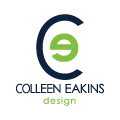Landing Pages: The What & Why
If you are an e-commerce business or you are a small business focusing on an online marketing strategy; you have probably heard the words “Landing Page.” What are landing pages? They are single web pages designed to get the visitor to commit a very specific action or to deliver a very specific set of information. They are pages with a specific purpose that usually help to drive sales in some way.
The Why
The premise behind why these types of pages are needed, is to cut down the amount of noise and distractions a visitor to your site might face in order to get a specific message across. For instance, if you owned an olive oil company and wanted to push sales for a new flavored olive oil, you might want to create a landing page for that specific purpose. Yes, you could create internal sidebar advertisements or banner advertisements throughout your site that called attention to this new product, but it will not be as effective as combining this strategy with a landing page specifically for the new product.
If you are advertising online and in traditional media to drive traffic to your site to buy this new product, your visitor may become distracted once they reach your site. Even if the direct link they followed brought them directly to the product page, they may become distracted by other suggestions, advertisements on your site, or just the design of the site and navigation buttons. While they are touring your site, they may forget why they came there in the first place and leave without making a purchase at all. This is where a landing page built specifically for the new product can come into play.
If instead, a landing page was design that focused only on that product and included great and high converting sales copy, you could potentially land that sale. Instead of driving traffic to your home page, product page or general store area of your site, drive the traffic to the landing page. Visitors that followed your direct link to the landing page, will be more satisfied because the content they are seeing is directly related to their reason for the visit. Landing on your home page may put them in the general category, but it does not relate specifically to what they were looking for. The more relevant their “landing” on a “page” is to what they want or are looking for, the higher the chance is of you making a sale. Relevancy is key.
Characteristics of a Great Landing Page
High converting landing pages utilize minimal graphic elements, are “clean” in their design presentation, simplistic and present information in an easy to digest format. A visitor should arrive on the page and know exactly what you want them to know and what you want them to do. Going back to our olive oil company example, the new product’s landing page should tell them the what, and the why. The why needs to also be relatable in terms of why they need the product to begin with. An easy way to do this is to combine using the AIDA (attention, interest, details, action) concept with the visitor’s need to know “What’s in it for me? Why do I need this?”
Avoid adding to many “actions” that the visitor may become distracted by and try to perform. For example, navigation links, social media links, newsletter sign-ups, ebook downloads, etc should not be included unless that is the focus of the landing page or is pertinent to the call to action (CTA) on the landing page. Make sure that it is very clear what you want them to do and as much as possible, keep that particular action “above the fold.” In design speak, anything a visitor sees when they land on a page without the need to scroll, is considered “above the fold.” When a visitor has to scroll down to see the rest of the content, that information is considered below the fold.
When designing your landing page, assume that everyone has ADD or a short attention span. In our go-go-go society, people often do not have the time, patience or attention span to read long, boring copy or wait for you to get to the point with your copy. Think PowerPoint presentation and keep it short, relevant and use bullet points. Use big buttons and CTA text that stands out and calls attention to the action that you would like for them to commit.
Including testimonials, user reviews, and social proof (tweets and status messages on social networks from others) are also great ways to help reinforce why the visitor needs to buy your product or commit the action you are trying to get them to commit.
By removing a lot of the noise and distractions a user might face on your main site; you have a better chance of getting higher conversion rates from your visitors. Streamlining things and putting a laser like focus on what you want them to do, keeps them more focused on that task than they would be if you directed them to a more generalized area of your site.
This is especially helpful and beneficial if you use pay-per-click (PPC) advertising platforms like Google’s Adwords. Link those ads directly to your landing page and you will see better results and conversions.
Colleen Eakins is a dynamic and creative individual that possess a knack for great design. With over 15 years of experience in the field of graphic design, Colleen is able to effectively brand her clients with great design pieces. Her motto is: “Anyone can make a pretty picture, but is it effective? Will it make your customer buy your product or use your services? My design tries to answer with a YES!”




